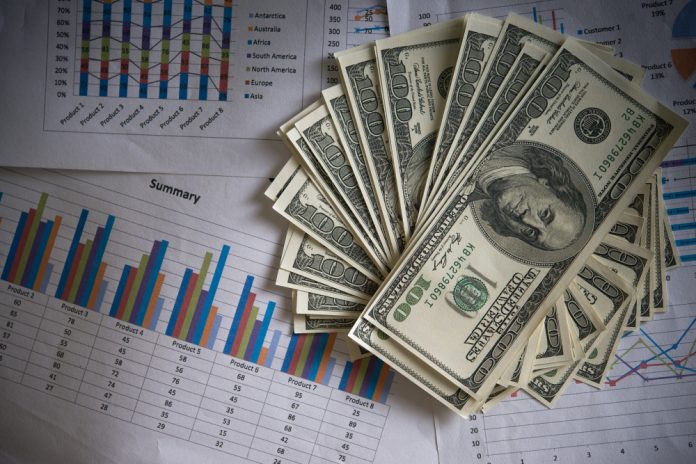The allure of cash has witnessed a dramatic resurgence across markets, attracting everyone from individual households to massive asset management firms, corporate treasurers, and more. The draw? An unprecedented chance to clinch a 5% yield amidst growing concerns about the US economic trajectory.
With liquidity instruments experiencing their highest rates in over twenty years – providing returns that surpass standard US debts or equities – money-market fund assets have burgeoned to never-before-seen levels. The hunger for these liquid, high-return instruments is most evident in the T-bill market, which has seen an influx of over $1 trillion in new acquisitions in just the past quarter.
Thomas Simons, a senior economist at Jefferies LLC, said, “The appeal of these yields means T-bills won’t sit with dealers for long. It’s interesting to see both retail and institutional investors drawn for the same reasons.”
Interestingly, primary dealers witnessed a drop in T-bill reserves to $45 billion last month, a significant decrease from July’s record-breaking $116 billion. This uptick in demand has made T-bills pricier, impacting the yield differentials with overnight index swaps – a tool for predicting the Federal Reserve’s actions.
Some money-market funds, not restricted to T-bills, are biding their time, awaiting more advantageous entry points and clearer economic signals.
As the US central bank braces for its policy meeting on Sept. 19-20, all eyes are on the upcoming inflation report, which is anticipated to provide insights on future price stabilization measures. Despite minimal chances of a rate increment this month, the market speculates a possible quarter-point hike come November.
Pre-2008 crisis, cash-centric investments were seen as lucrative, until the Fed cut interest rates, holding them at a near-zero stance for close to a decade. But, post-pandemic, the Fed’s aggressive rate increases have rekindled interest in risk-free assets like T-bills as attractive investment avenues, especially when compared to bank offerings.
The key players in this trend include:
- Retail Investors: With T-bill yields soaring past 5% early this year – a first since 2008 – small-scale investors are diversifying from bank accounts to short-term securities.
- Corporate Treasurers: Firms, once reliant on banks during the zero-interest era, have now shifted to money funds, leveraging rate hikes faster than banks. Many are also directly purchasing T-bills to benefit from higher yields.
- Asset Managers: Many asset managers find T-bills a refuge amidst the overpriced risk asset market. They see potential in T-bills, with some awaiting wider credit spreads and significant S&P 500 drops before returning to risk assets.
- Money Funds: Even with the surge in T-bills, money-market funds have attracted over $880 billion this year, setting a new record at $5.62 trillion. Projections indicate these balances might exceed $6 trillion by year-end, especially with increased Fed rate cut expectations.
Presently, some funds are playing it safe, waiting for more favorable yield rates or clearer direction from the central bank.
However, as John Tobin from Dreyfus Cash Investment Strategies expressed, the overall sentiment remains positive, with hopes of more attractive T-bill pricing in the near future.
Featured Image – Freepik









